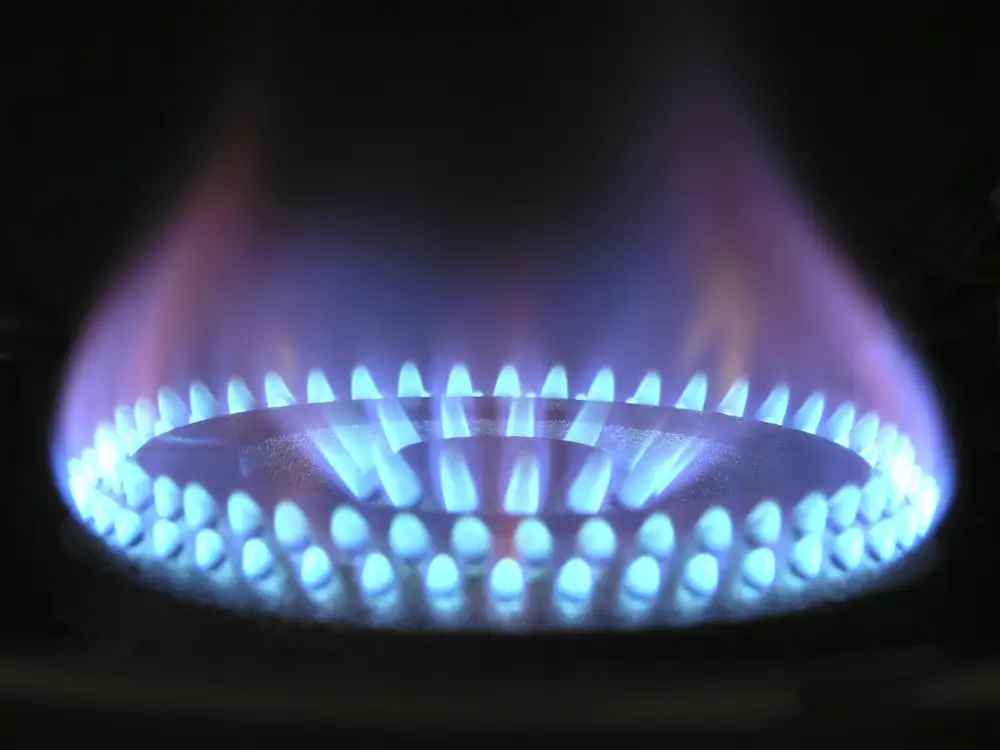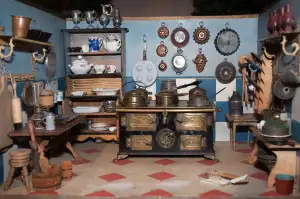Unlock the Secret to Perfectly Baked Delights with a Convection Oven: Your Ultimate Guide to Mastering Home Cooking

Are you tired of unevenly baked cookies or soggy pizzas? It's time to unlock the secret to perfectly baked delights with a convection oven. This modern kitchen appliance has revolutionized home cooking, providing professional-level results right in your own kitchen. Whether you're a seasoned chef or a beginner cook, understanding the basics of convection ovens will take your culinary skills to new heights. In this ultimate guide, we will delve into how convection ovens work, their benefits, and provide valuable tips for cooking with them. Get ready to elevate your cooking game and impress your family and friends with deliciously cooked meals that are sure to tantalize their taste buds.
How Convection Ovens Work
Convection ovens are a game-changer in the world of home cooking. Unlike traditional ovens, which rely on radiant heat to cook food, convection ovens use a fan to circulate hot air evenly throughout the oven cavity. This constant movement of hot air ensures that your dishes are cooked more quickly and evenly.
The fan in a convection oven helps to distribute heat more efficiently, allowing for faster cooking times. It also eliminates hot spots, so you don't have to worry about rotating your pans halfway through baking. This even distribution of heat results in perfectly cooked dishes with golden brown crusts and moist interiors.
In addition to the fan, convection ovens also have heating elements at the top and bottom of the oven cavity. These elements work together with the fan to provide consistent heat from all angles. The combination of radiant heat from the heating elements and circulating hot air creates an ideal environment for baking, roasting, and broiling.
The temperature settings on a convection oven may be slightly different from those on a conventional oven. It's important to follow recipes that specify whether they are intended for convection or conventional cooking. Most convection ovens come with both regular bake and convection bake settings, giving you the flexibility to choose based on your recipe's requirements.
Overall, understanding how convection ovens work can help you take full advantage of their capabilities. With their ability to cook food faster and more evenly, these ovens are a must-have for any home cook looking to elevate their culinary skills.
Benefits of Using a Convection Oven
Using a convection oven comes with numerous benefits that can greatly enhance your cooking experience. One of the main advantages is the even distribution of heat. The fan inside the oven circulates hot air, ensuring that every part of your dish receives equal heat. This results in faster and more consistent cooking, as well as perfectly browned and crispy exteriors.
Another benefit is the reduced cooking time. With the efficient airflow, convection ovens can cook food up to 25% faster than conventional ovens. This not only saves you time but also helps to retain the natural flavors and nutrients in your dishes.
Convection ovens are also known for their versatility. They can be used for a wide range of cooking methods including baking, roasting, broiling, and even dehydrating. Whether you're making cookies, roasting a chicken, or toasting bread, a convection oven can handle it all.
Additionally, using a convection oven allows you to cook multiple dishes at once without worrying about flavor transfer. The consistent airflow prevents flavors from mixing, so you can bake dessert while roasting vegetables without any interference.
Lastly, convection ovens offer energy efficiency. Due to their shorter cooking times and even heat distribution, they require less energy compared to conventional ovens. This not only saves on electricity bills but also reduces your carbon footprint.
In conclusion, using a convection oven provides several benefits such as even heat distribution, reduced cooking time, versatility in cooking methods, prevention of flavor transfer, and energy efficiency. By incorporating this appliance into your kitchen arsenal, you can unlock the secret to perfectly baked delights and elevate your home cooking game to new heights.
Tips for Cooking with a Convection Oven
1. Adjust cooking time and temperature: Since convection ovens circulate hot air, cooking times can be reduced by about 25%. Lower the temperature by 25 degrees Fahrenheit to prevent overcooking.
2. Use shallow pans: Shallow pans allow for better air circulation and even browning. Avoid using deep, covered dishes as they can hinder the convection process.
3. Rotate pans halfway through cooking: To ensure even cooking, rotate your pans halfway through the cooking process. This will help prevent any hot spots in the oven.
4. Avoid overcrowding: Leave enough space between dishes to allow for proper airflow. Overcrowding can result in uneven cooking and longer cooking times.
5. Use low-sided baking sheets: Opt for low-sided baking sheets instead of high-sided ones to promote better browning and crispiness.
6. Check food frequently: Keep an eye on your food as it cooks since convection ovens tend to cook faster than conventional ovens. Use a timer and regularly check for doneness to avoid overcooking.
7. Reduce recipe temperatures: When using recipes designed for conventional ovens, reduce the recommended temperature by 25 degrees Fahrenheit when using a convection oven.
By following these tips, you'll be able to make the most out of your convection oven and achieve perfectly baked delights every time!
Convection Oven vs. Conventional Oven: What's the Difference?
When it comes to cooking, the choice between a convection oven and a conventional oven can make a big difference in the outcome of your dishes. The main difference lies in how heat is distributed within the oven. In a conventional oven, heat is generated from the bottom or top heating elements and rises naturally, resulting in uneven cooking and hot spots. On the other hand, a convection oven uses a fan to circulate hot air evenly throughout the oven cavity, ensuring that food cooks more quickly and evenly. This means that you can achieve perfectly baked delights with a convection oven, as it eliminates the need for constant rotating or flipping of dishes. Additionally, convection ovens are known for their ability to brown and crisp foods more effectively than conventional ovens. So if you're looking to elevate your home cooking game and achieve professional-level results, investing in a convection oven is definitely worth considering.
Popular Brands and Models of Convection Ovens
When it comes to choosing a convection oven for your home, there are several reputable brands and models to consider. One popular brand is Breville, known for its high-quality and innovative kitchen appliances. Their Smart Oven Pro is a top choice among home cooks, offering a spacious interior and precise temperature control.
Another trusted brand is KitchenAid, which offers a range of convection ovens with advanced features. The KitchenAid Architect Series II is highly regarded for its even heat distribution and versatile cooking options.
For those looking for a more budget-friendly option, the Oster Extra Large Digital Countertop Oven is worth considering. It offers convection baking capabilities at an affordable price point.
If you're in need of a commercial-grade convection oven, the Viking Professional Series is a top contender. Known for its durability and powerful performance, this oven can handle even the most demanding cooking tasks.
Other notable brands include Wolf, GE Profile, and Frigidaire. Each brand offers a variety of models with different sizes and features to suit your specific needs.
Before making a purchase, be sure to read reviews and compare prices to find the best convection oven that fits your budget and requirements. With the right brand and model, you can unlock the secret to perfectly baked delights in your own kitchen.
Maintenance and Cleaning Tips for Convection Ovens
To keep your convection oven in top shape, regular maintenance and cleaning are essential. Here are some tips to help you maintain your oven:
1. Regularly clean the interior: Wipe down the interior of the oven with a damp cloth or sponge after each use. This will prevent any build-up of grease or food residue.
2. Clean the racks and trays: Remove the racks and trays from the oven and wash them with warm soapy water. Scrub off any stubborn stains or burnt-on food particles.
3. Clean the fan and vents: The fan and vents in a convection oven can accumulate dust and debris over time, affecting its performance. Use a soft brush or vacuum cleaner attachment to remove any dirt from these areas.
4. Check the door seal: Inspect the door seal for any signs of wear or damage. A faulty seal can lead to heat loss, resulting in longer cooking times and uneven baking. Replace it if necessary.
5. Avoid using harsh chemicals: When cleaning your convection oven, avoid using abrasive cleaners or harsh chemicals as they can damage the interior surfaces. Stick to mild soapy water or specialized oven cleaners recommended by the manufacturer.
6. Schedule professional maintenance: Consider scheduling professional maintenance at least once a year to ensure that all components are functioning properly and to address any potential issues before they become major problems.
By following these maintenance and cleaning tips, you can prolong the lifespan of your convection oven while ensuring optimal cooking results every time you use it.
In conclusion, investing in a convection oven can greatly enhance your cooking experience. Its ability to circulate hot air evenly around the food ensures that it is cooked thoroughly and evenly, resulting in perfectly baked delights every time. The benefits of using a convection oven, such as reduced cooking time and energy efficiency, make it an ideal choice for home cooks who want to save time and money without compromising on taste and quality.
By following the tips for cooking with a convection oven, you can maximize its potential and achieve excellent results with your favorite recipes. Whether you're baking cookies, roasting vegetables, or broiling meats, the convection oven's versatility allows you to experiment and explore new culinary possibilities.
While there may be some differences between convection ovens and conventional ovens, understanding how they work can help you make an informed decision when purchasing a new appliance. Consider popular brands and models of convection ovens that suit your needs and budget.
Lastly, don't forget to properly maintain and clean your convection oven to ensure its longevity and optimal performance. Regular maintenance will keep it running smoothly so you can continue to enjoy the benefits of this innovative cooking tool.
Unlock the secret to perfectly baked delights by embracing the power of a convection oven. With its ability to cook faster and more efficiently while delivering exceptional results, it's no wonder why many home cooks are making the switch. Upgrade your kitchen today and elevate your culinary creations with the help of a convection oven - where every dish becomes an expression of love for food.
Published: 09. 12. 2023
Category: Home



